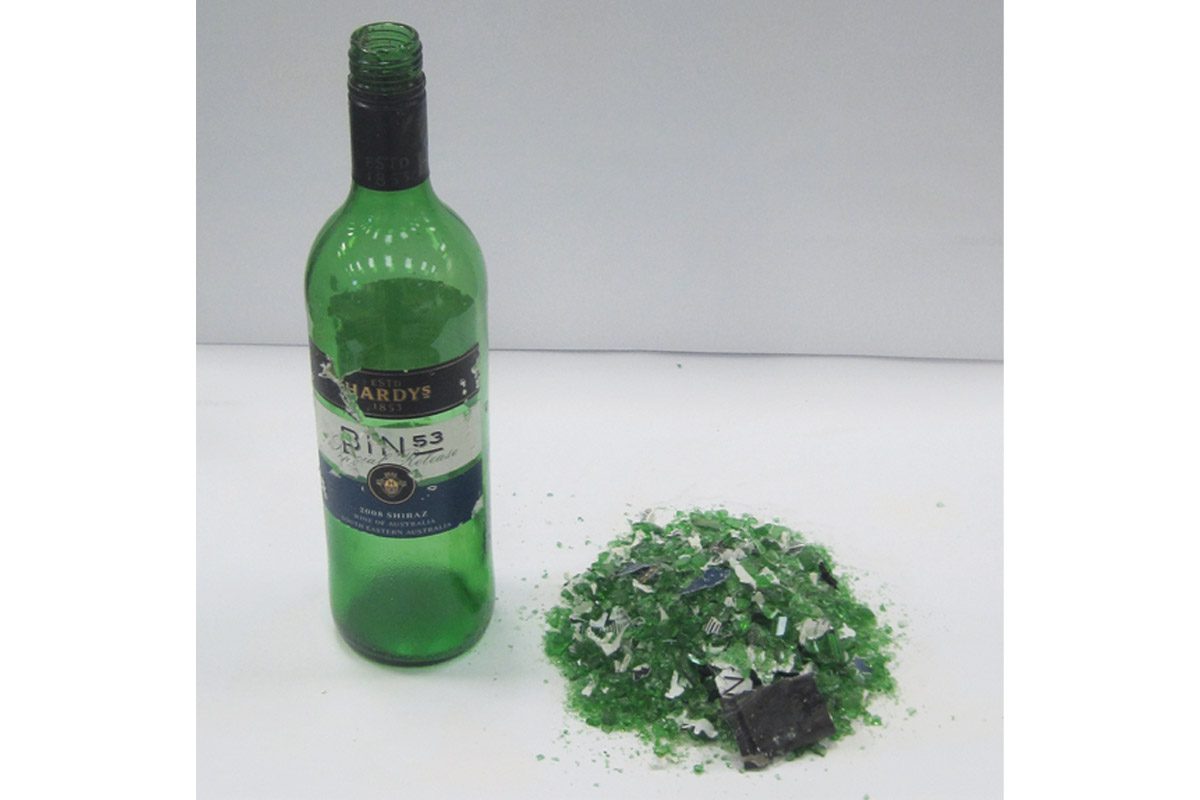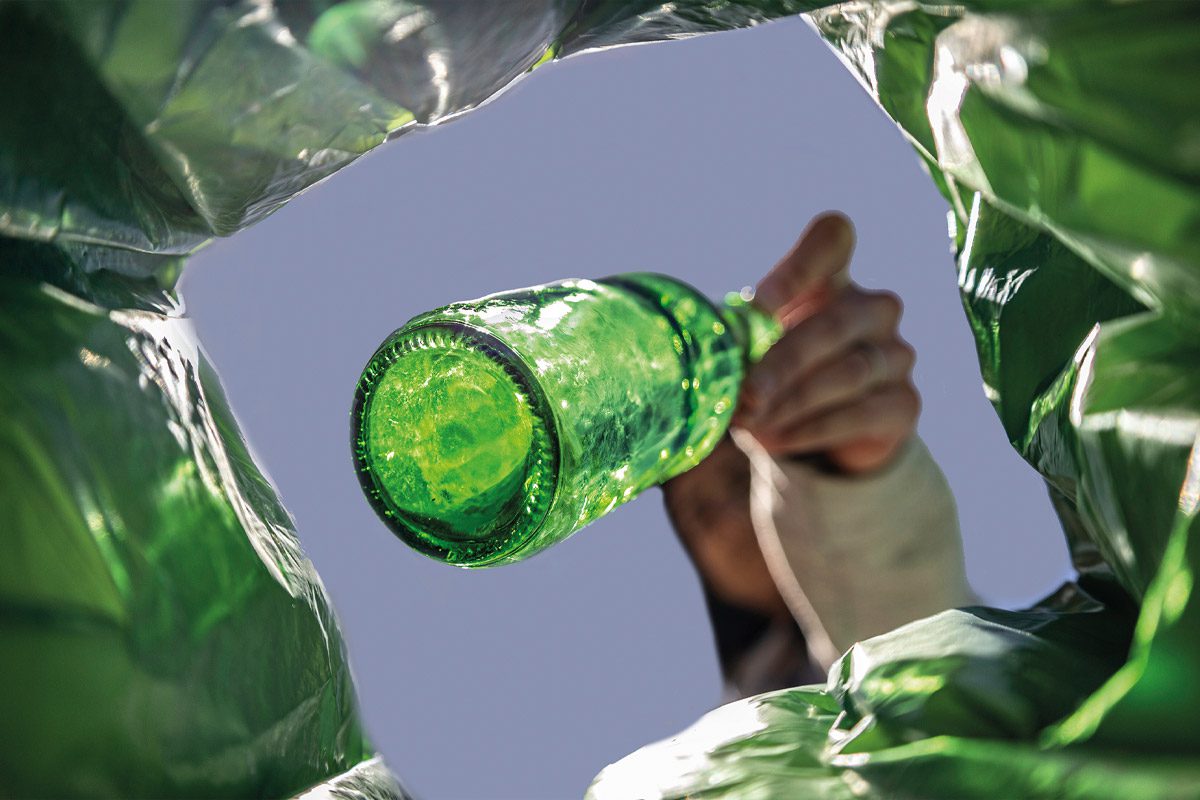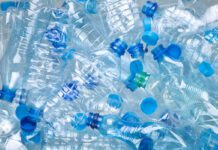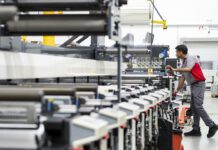Glass is often presented as the perfect circular economy material, possessing the qualities of being entirely and endlessly recyclable. Unfortunately, like so many things in life, the truth is a little more complex on close inspection. Envirotec spoke to Steve Whettingsteel, founder and CEO of glass recycling technology firm Krysteline, in search of a clearer understanding.
The little-told story with glass seems to be that, while 100% recyclability is indeed achievable, and should be everyone’s aspiration, the technology required to prepare some of the more problematic and contaminated fractions for remelt – and to do it in a cost-effective and low-carbon way – can be non-trivial, and the challenges have not been fully grasped by many.
In many places, as much as 40% of the waste glass fed into collection systems can find its way to landfill, or use as a low-value aggregate. This is the fraction comprised of particle sizes smaller than 10mm in length, which is generally beyond the abilities of an optical sorter to segregate it from other contaminants. Without segregation, it has to part company at this stage with the bulk of the material, the “cullet” that is destined for remelt and the manufacture of new glass products.
The CO2 losses can also be significant, in the region of $2.64 billion annually worldwide. Around 16 million tonnes of container glass is landfilled annually
An alternative to landfill
Whettingsteel explains that the technology is now available to do things differently, and this problematic fraction can be less carbon-intensive than cullet, and can acquire a higher re-sell value than the material going into cullet, if handled appropriately. It’s a mission whose fulfilment seems to depend on working co-operatively with the different parties in the glass recycling value chain, including glass producers, cullet users, waste collectors, recyclers and local authorities. And he seems at pains to emphasize an approach of not stepping on toes, but rather of stepping in with complimentary technology or a piece of useful expertise, wherever it might be helpful.
“Our business model is about 100% of that glass entering the plant being recycled,” he said. “It doesn’t matter if it’s mixed colour or a number of different material types – we have the process to separate the materials and maximise their value.”
It’s an approach that’s all about sharing knowledge and expertise with “like-minded companies”, whether it be MRF operators, or firms looking to develop products like low-CO2 cement or fertilizers, or those providing optical sorting of cullet. The challenges of transforming this material can be quite specific to the end markets being addressed, and waste management firms will often not be as engaged in these as they could be, as its not their core business. “So our plants bridge that gap,” he says.
Maritime beginnings
Some of these challenges first presented themselves to Whettingsteel when he was working as a marine engineer on cruise ships in the 1990s. Waste management on these vessels was undergoing an urgent evolution at the time, as he recounts, prompted by a scandal that erupted when one operator was caught dumping waste illegally in the Caribbean. This was the jumping-off point for Whettingsteel’s own involvement in developing systems for glass recycling on several ships.
Having later come ashore to focus more interest on glass processing machines, he found that “they were all pretty much the same”, he recalls, and basically “a hammer in a box”, breaking material fragments into smaller pieces by the simple action of crushing. The problem was that it did this with contaminants such as labelling material at more or less the same rate as with glass, and did nothing to tackle the problem of separating glass and contaminants.
Further exploration of the problem led him to the development of glass implosion, a system that imparts a momentary vibration to the glass, causing it to collapse while also liberating contaminants, making it easier to segregate them. It also opened up the range of suitable feedstocks, being able to handle even very dirty or contaminated glass waste streams.
Krysteline thus had its beginnings with implosion, and the development of “quite small machines”, able to process 1-2 tonnes of material per hour, and initially around 3000 of these were sold around the world, with early customers including the British Antarctic Survey, a laboratory in the Falkland Islands, super yachts, hotels and pharmaceutical companies.
Since 1997 this has led to the development of systems for the construction of entire plants equipped to not only reduce the volume of material, but also to screen, separate, clean and colour-sort different fractions, for the preparation of a range of products with varying levels of re-sell value.
More recent landmarks have been with findings ways to handle the more challenging types of glass. For example, the laminated glass used in car windscreens he says “has always been a challenge”, but they now have a system to segregate around 99% of the PVB film from within the laminated glass. Similarly, deconstructing photovoltaic cells and segregating the glass has presented obstacles, but Krysteline is now partnering with an Australian company on a full recycling plant for PV cells, the details of which are to be announced in the coming months.
Ground zero:
Adapting it for end markets
Some of the economy of this approach is to do with the re-sell value acquired by these waste glass fractions after they have been extracted from comingled material, processed and prepared – and readied for any one of a number of end markets. Water filtration was the first end market they addressed.
Subsequently, they have worked to develop a product for cement production, and they have partnered with the University of Sherbrooke on a product that is fully approved to the ASTM global standards.
Higher-value end products include foam glass, a lightweight aggregate-based material which gets used in airport runways and construction sites, and Whettingsteel says its CO2 cost “is extremely low” compared to the lightweight materials it replaces.
A recent patented invention is a glass-based silicon fertilizer – “a game changer” he says, that lets you take post-consumer, post-industrial glass and turn it into a powder, and morph some of it into pellets. The resulting mixture can be added to compost, with the result that some silicon leaches out and enhances the growth of certain plants or crops such as rice and plantains. The product might be deemed especially helpful, he suggested, in places struggling to balance the demands of waste management and food production.
There are numerous stages involved in processing glass for this kind of reuse. Krysteline is is working on many of them, or partnering with firms who can manage others, or with complementary expertise.
Imploders are available in different ranges, from 2 to 40 tonnes/hour, and these can be free-standing (i.e., for bottle or plate-glass size reduction) or installed within a processing line for continuous operation. And these can work in conjunction with screeners, to segregate the glass from other feedstocks.
Improved channel
Krysteline has worked with the Island of Guernsey local authority in its efforts to develop a strategy for recycling its own glass, a priority given the lack of space for landfill sites, and the council’s conservation orientation. The solution included a system to allow some of the recycled glass to be used as an aggregate material on the island, providing a source of revenue. For this, one of its imploders processes 6 tonnes of material per hour, working for 4 or 5 hours per day. It works alongside an integrated feed hopper, modular belt conveyor, and a taper slot screener – the latter can process and segregate the glass into two sizes of grit, and separate out the non-glass waste.
Through collaboration with a local quarry, the glass crushed at this site has been able to be used in the construction of roads and housing on the island since 2011, and this has also reduced Guernsey’s requirement to import sand.
Footprint fulcrum
Emissions is one of the areas where he suggests they are trying to challenge traditional perceptions around glass, and offer better value to cullet users and other potential partners. There are often all sorts of CO2 costs involved in the various stages of collecting and recycling glass: From the point where it might be collected from kerbside, transported to a central recycling point, and taken to different locations for segregation or colour sorting. “Our approach is to ensure all products have a negative CO2 footprint, even after a long-chain process,” he says.
One element of this is to avoid hauling the product around, often achieved by locating lots of different activities on the same site. For example, not only glass resizing and processing to separate cullet from different fractions with re-sell potential, but also having a waste-to-energy plant on site. The recycling of glass containers often produces a stream of mixed plastics and other items that can’t be recycled.
At one site, the firm has installed thermal cleaning systems, with some of the heat being recovered and used with a heat exchanger, providing further heat to pre-heat the glass prior to its alternative use.
The firm’s technology fits into larger installations of this kind, where other pieces of the material recovery puzzle might be located. So, for example, foam glass or cement plants. Having it in one place eliminates the need to continually haul the materials around to processing plants in different locations.
Krysteline has partnered with aluminium recycling plants, and he cites a UK firm that has found a way to segregate aluminium metal from the aluminium salt slag produced by the secondary aluminium industry, using an imploder.
One area where there has been a contemporary call upon the firm’s expertise is in the de-packaging of pharmaceuticals. The quantity of vials being produced for Covid vaccinations is immense, and he says that the firm can remove remove aluminium or rubber stoppers, and separate and return them.
This is also an area where implosion technology is being adapted to provide secure destruction units, and is a topic on which Whettingsteel is scheduled to present in July 2022 as part of the United Nations’ International Year of Glass celebrations.
Other recent contracts include one in Quebec, to install its technology across six material recycling facilities.
The range and variety of international projects coming to fruition seems to offer some testimony to the appetite out there for better technology solutions with glass recycling, and Whettingsteel believes it is a vindication of the firm’s philosophy, technology and business model.








